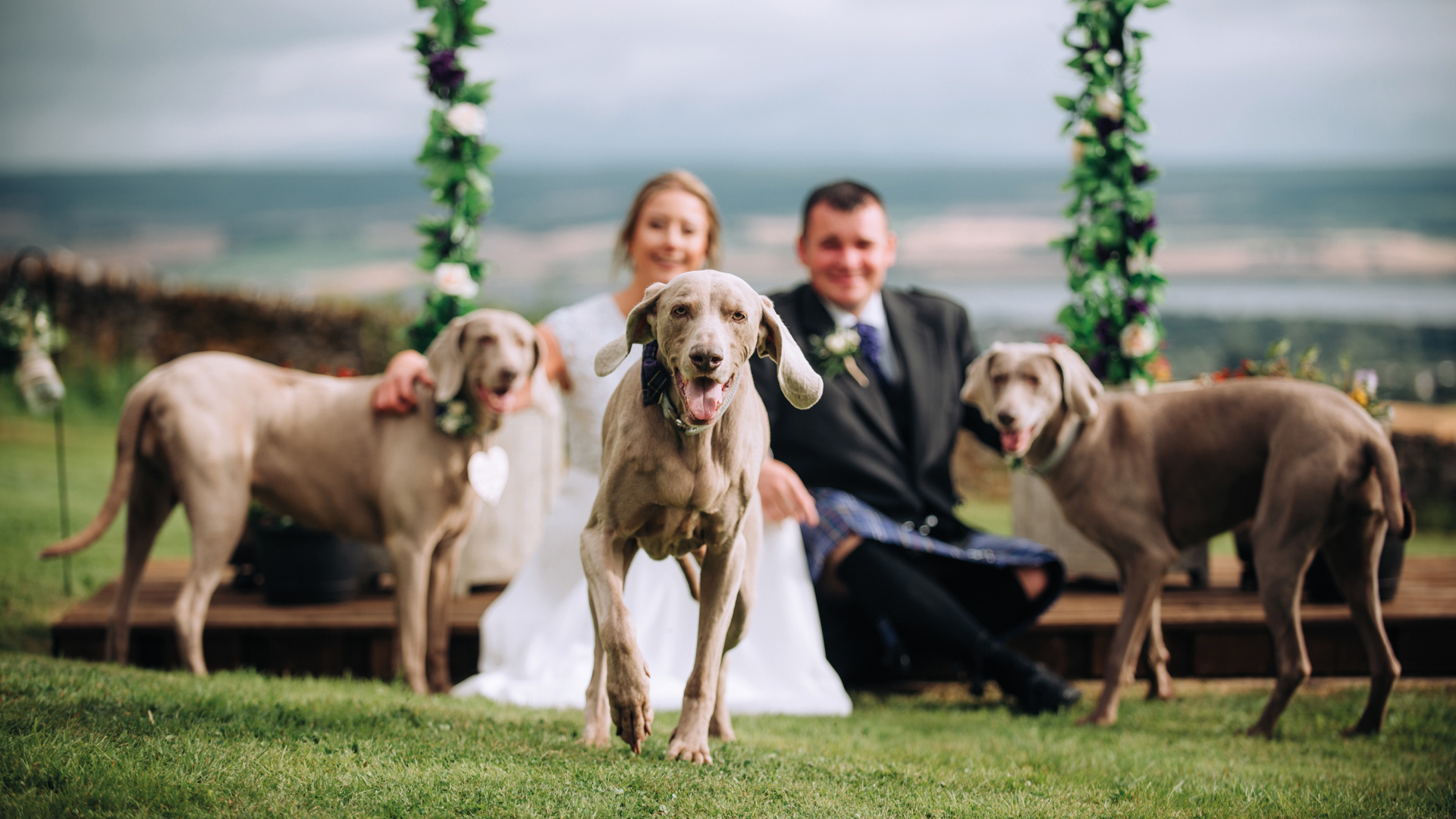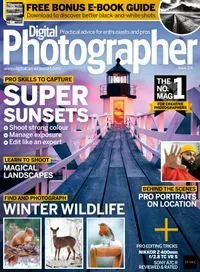Running a photography business full-time isn't for everyone – but there are other ways to get into the industry
The latest essential career advice and insight from the Digital Photographer Magazine pro community

Every month, members of the Digital Photographer Magazine pro community share essential career advice on being, becoming and improving as a professional photographer.
Here are some answers to recent questions, asked by readers, and following that we chat to Chantal Macleod-Holdsworth about running two businesses in tandem.
Working two jobs
Lorna Jones: I’ve always wanted to become a photographer, however, I simply don’t have the luxury, as my current full-time job pays the bills. I also feel particularly anxious at the thought of being self-employed. What would your advice be?
DP: Unless you have financial security, it is hard to make the jump. Being self-employed and running your own company isn’t for everyone, as there are many difficult aspects to it.
Don’t feel bad that you can’t or don’t want to be self-employed – there’s no point in leaving a steady income if your mental health is going to suffer or there’s a danger you’ll be homeless if you can’t pay the bills! Many photographers work multiple jobs or have multiple revenue streams coming into their business – see our interview with Chantal Macleod-Holdsworth, below, who runs two businesses side by side.
If photography is something you’ve always wanted to do, you will get there in the end but, if you want to succeed, you have to make some space for it. Is there a way you could drop your hours by one day a week to free up some time for your photography? Have you looked at the market to see if there are any employment opportunities in the photography profession? Going self-employed is only one way into the industry.
What to charge for travel expenses?
Peter: I’ve never charged for travel in the past as most of the jobs I’ve been doing have been close to home. However, in the last few months, I’ve had a few bookings further afield so I’m wondering what rates other photographers charge?
The best camera deals, reviews, product advice, and unmissable photography news, direct to your inbox!
DP: In business, there are many hidden costs and travel is one of those, so it’s good to get your policy in order. First, you need to take into account your fuel costs and then your time. In the UK, most big companies will compensate mileage claims at 45p per mile. This is also, as I’m sure you’re aware, the amount you can claim against your taxes. So 45p per mile is a good place to start.
You also need to take into account your time. For example, if you travel 100 miles and it takes you an hour each way, that’s 60 minutes of your time plus 100 miles at 45p. Calculate what 60 minutes of your work time costs you, what 100 miles at 45p is and then balance it out. You don’t want to put your client off by charging a fortune for travel but, equally, don’t undervalue yourself as you need to be making a profit.
Studio lights on a budget
Lacey Bain: I want to set up a studio as I’m keen to shoot product shots. I only have a limited budget, so what studio lights would you recommend?
DP: The first that springs to mind is the Godox AD200 Pro 200Ws 2.4G Flash Strobe. This light is relatively lightweight, so it’s easy to move about and has a maximum power output of 200W, which is fine for product photography.
If you’re after something more powerful, the PixaPro Lumi 400 II 400Ws studio flash light is a great option and costs only £155 per light. You can also buy kits from PixaPro that come with lights and accessories and have been designed with the budget studio photographer in mind.
Finally, the Neewer S101-400W Pro Studio Monolight Strobe Flash has also been made for those on a budget, and you can pick up this model for £142.
Good luck with your venture!
How to run two businesses
We talked to Chantal Macleod-Holdsworth about how she is balancing photography and dog-walking…

Tell us about yourself and how you got to where you are today.
I was born and raised in Germany but moved to Scotland in July 2005, when I was 23. For the first eight years, I worked in hotels, but my health kept declining due to an autoimmune illness. I couldn’t handle the hours and stress of hospitality anymore, and I was really unwell.
I left the hotel scene in around 2012, and a friend offered me a part-time job in her grooming salon. It wasn’t really for me but it just reminded me how much I love dogs and with that, Chantal’s Walkabout, my wee dog-walking business was born. At the same time, I took in my dog Jack, who I credit for the person I am today, and his sister, Kalli, came along in 2013. Sadly we lost her in 2020. She was a rescue dog and taught me more than I could have imagined.
At the start, I just wanted better photos of the dogs, so I dragged the Nikon D60 my dad had gifted me a couple of years before out of the cupboard and a new obsession was born. I used my own dogs as well as my dog-walking clients as practice, and Jack and I especially have a close bond because of it but I never thought it would go any further than that. In 2014, I started taking on paying clients and the rest, as they say, is history. Now I enjoy photographing dogs, horses and sometimes even families!
How do you split your time between your photography and your dog-walking business?
The dog-walking business sort of runs itself now. I’m a solo dog walker, which means, for the most part, I only take one owner’s dog (or dogs) at a time. I’ve been going with that for 11 years and spaces are few and far between. Changes don’t happen often, and I don’t have to advertise and all that jazz, which makes it easier to allocate more time to my photography business, CMH Photo.
Would you like to go full-time with your photography business or are you happy with your setup as it is?
The photography business is where I have loads of room to grow, but I’m doing it at my own pace. It’s so much more work intensive with behind-the-scenes stuff, editing, the website and social media, so I am mostly keeping to one or two shoots per week. In the long run, I hope to phase out the dog walking slowly and eventually just do the photography.
Do you ever find it overwhelming running two businesses?
Loads of people ask whether being self-employed is stressful and, sure, it has its moments! But it’s my stress and I can take on as much or as little work as I like.
What advice would you give to anyone else wanting to work as a part-time photographer alongside their other work?
The best tip I can give anyone who is considering being a part-time photographer is to just go for it! Try not to overstretch yourself though, and don’t compare your progress to anyone else.

Get the best magazine for enthusiast and pro photographers delivered to your door or device with a subscription to Digital Photographer. Learn the hottest photo trends and techniques while getting essential advice on earning cash from your photography.
If you're looking at going pro, take a look at the best professional cameras. For glass, the best standard zoom lenses are a good place to start!
Digital Photographer is the ultimate monthly photography magazine for enthusiasts and pros in today’s digital marketplace.
Every issue readers are treated to interviews with leading expert photographers, cutting-edge imagery, practical shooting advice and the very latest high-end digital news and equipment reviews. The team includes seasoned journalists and passionate photographers such as the Editor Peter Fenech, who are well positioned to bring you authoritative reviews and tutorials on cameras, lenses, lighting, gimbals and more.
Whether you’re a part-time amateur or a full-time pro, Digital Photographer aims to challenge, motivate and inspire you to take your best shot and get the most out of your kit, whether you’re a hobbyist or a seasoned shooter.





